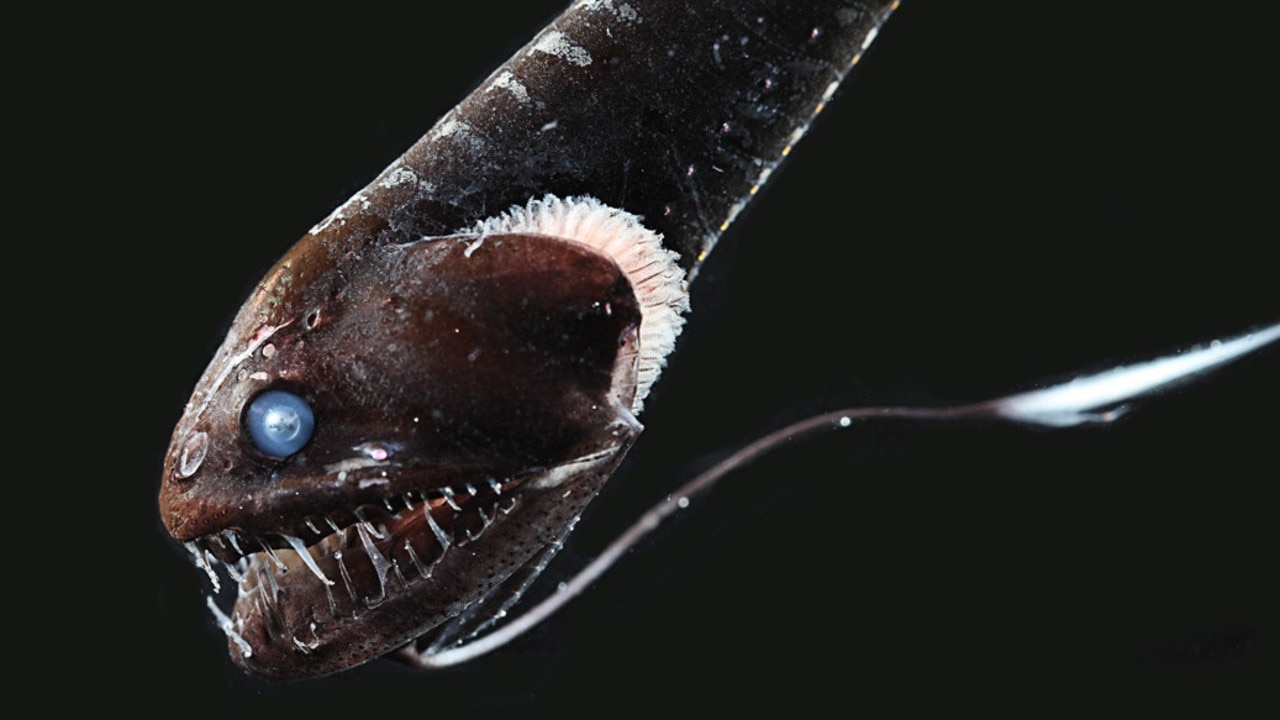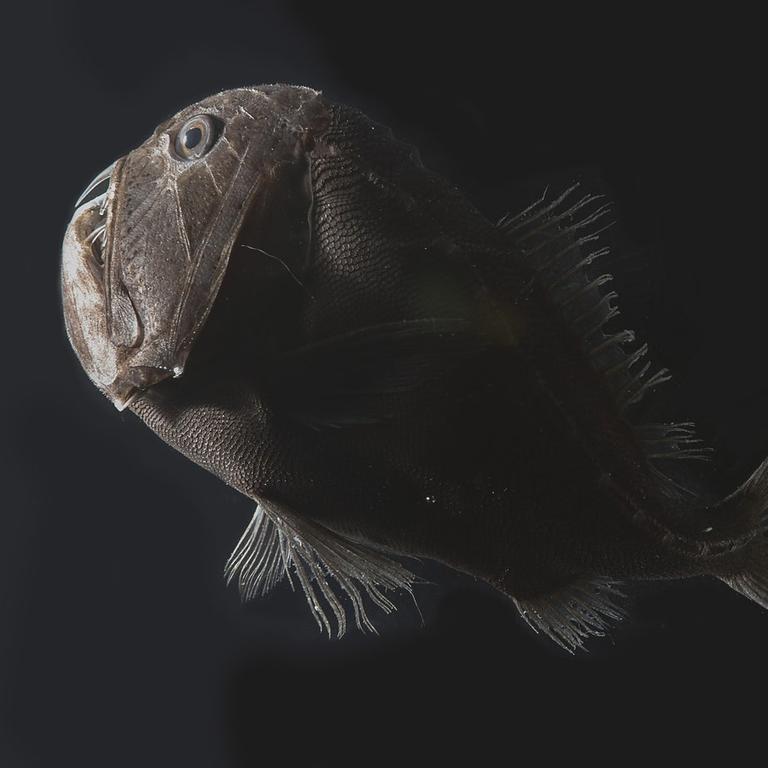Ultra-black fish darker than vantablack discovered | Photo
Scientists have discovered an intriguing new way several types of fish camouflage themselves in the dark depths of the ocean.
Scientists have identified more than a dozen new species of virtually invisible fish lurking at the bottom of the ocean.
The deep sea dwellers have a special skin that absorbs 99.95 per cent of photons and reflects only 0.5 per cent of light, making them essentially invisible, especially in the dark depths of the ocean.
Researchers who studied the fish theorised they may have evolved to be able to absorb light from bioluminescent sources, like the famous anglerfish.
RELATED: Fish with ‘luscious’ human lips goes viral

RELATED: Shark’s 50-minute battle with a whale
But initially they had trouble studying them at all.
“It didn’t matter how you set up the camera or lighting – they just sucked up all the light,” Smithsonian National Museum of Natural History zoologist Karen Osborn said.
A total of 18 fish collected from trawling in the Gulf of Mexico and California’s Monterey Bay were analysed.
Sixteen of them reflected less than 0.5 per cent of life, while the remaining two reflected less than 0.6 per cent.
That puts the fish on par with vantablack, one of the darkest substances known.
The study revealed the pigment cells of the fish were so tightly packed that light could not escape, similar to vantablack’s tightly woven nanotubes that bounce light around until it dissipates.
RELATED: ‘Hellboy’ goes viral in stingray video

RELATED: Cow caught on camera at police station
The fish boast similar reflectance of land-dwelling animals, but unlike them the fish only relies on its skin pigment.
“Effectively what they’ve done is make a super-efficient, super-thin light trap,” Ms Osborn said. “Light doesn’t bounce back; light doesn’t go through. It just goes into this layer, and it’s gone.”
It’s hoped that understanding the pigment could help improve increasingly sought after advances in camouflage technology.
The study was funded by the Smithsoniam museum, Duke University, the US National Oceanic and Atmospheric Administration, and the US Department of Defence, and appears in the latest issue of peer-reviewed journal Current Biology.



